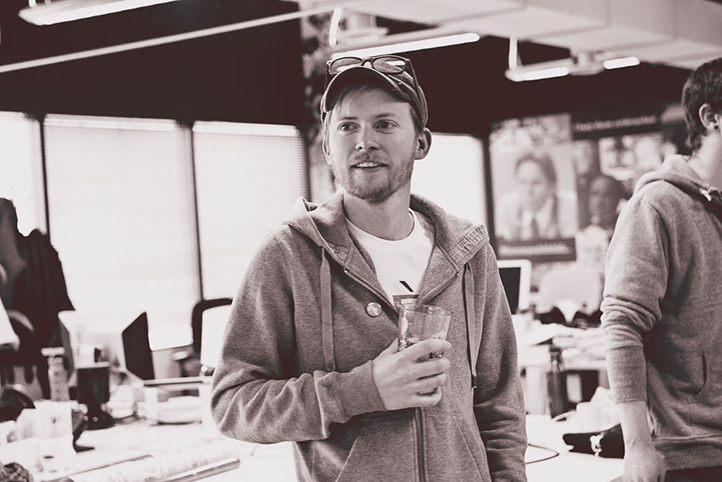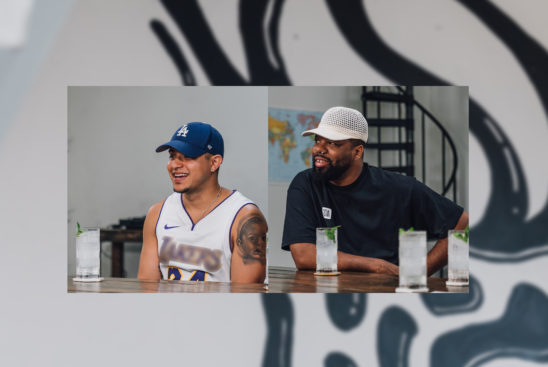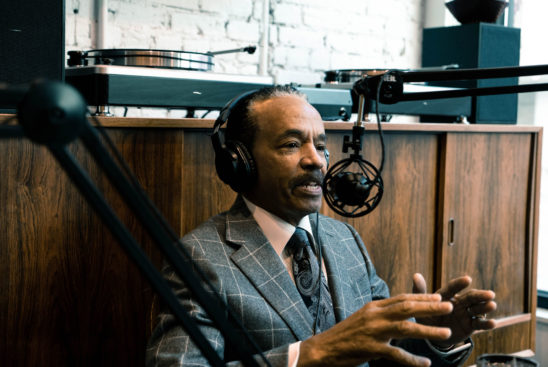It’s been 13 years since you founded Threadless, yet you’re only 33!
I started Threadless when I was a sophomore in art school and working a full-time job as a web developer. I learned web development when I was 15 or 16 in high school. I grew up in a really small town in Indiana. I would go around the downtown and knock on the doors of businesses asking if I could make them their websites for free just because I was learning how to do it. By the time I actually got a job as a web developer in high school I kind of got sick of it so that’s why I decided to go to art school instead of engineering or computer science or anything like that.
This was in the days before Google, so how does a 15-year-old teach himself how to build a website?
Websites were a lot simpler back then. When I got my first computer I was super curious about how stuff worked so I always clicked everything on the computer. In the web browser there’s an option called view source and when you choose that it shows you the code behind the site so I kind of reverse-engineered it and that’s how I learned it. I wasn’t ever formally taught, I just sort of picked it up. But I actually wasn’t the best student. I wasn’t interested in school so I would spend a lot of time outside of class learning how things worked.
What was your childhood like?
My dad was in the Army when I was growing up, he served every other year for 13 years going through school so we were in a state of poverty really until about fourth grade when my dad finally got his degree. He’s a pathologist now, so when I was growing up he was getting his doctorate and was in medical school. We were very poor during that time but once he became a doctor we were more middle class. That was a shift in about fourth grade when we settled down and weren’t moving around Army bases anymore.
Tell us about the lightbulb moment that sparked Threadless.
I was working as the web developer and going to art school and pretty much every other moment I had I was spending it on a forum called Dreamless that was made up of a bunch of creatives from around the world. It was an invite-only forum that I somehow got invited to. There was an event taking place in London where they hosted a t-shirt challenge and I entered a design into it and my design was chosen as the winner. I was so excited about it that I started Threadless an hour after that. I just posted a thread on the forum that said, “Post designs in this thread and I’ll make the best ones into t-shirts and posters.” It was that simple. I put in $500 and my friend put in another $500 and we used that money to print the first shirts.
When did you realize your idea could turn into a successful business model?
It literally wasn’t until 2006, six years from starting it, that we were like, “Threadless is what our business is.” It took us until 2002 for it to not be a hobby anymore. I quit my job and we started doing web design work for clients and at that point Threadless became proof that we knew how to build a website but where we were spending all of our time was building websites for other people. Then in 2004 we realized Threadless was making us the most money and we should probably stop this web design business and just do Threadless. But even at that moment we didn’t just stop doing the consulting work, we started launching our own projects. We started up six other businesses; 15 Megs of Fame, Naked and Angry, I Park Like an Idiot, OMG Clothing, all of these other businesses. All of those failed slowly over the next two years and by 2006 we were like, “Okay, Threadless is it. Let’s just spend 100 percent of our time on Threadless.”
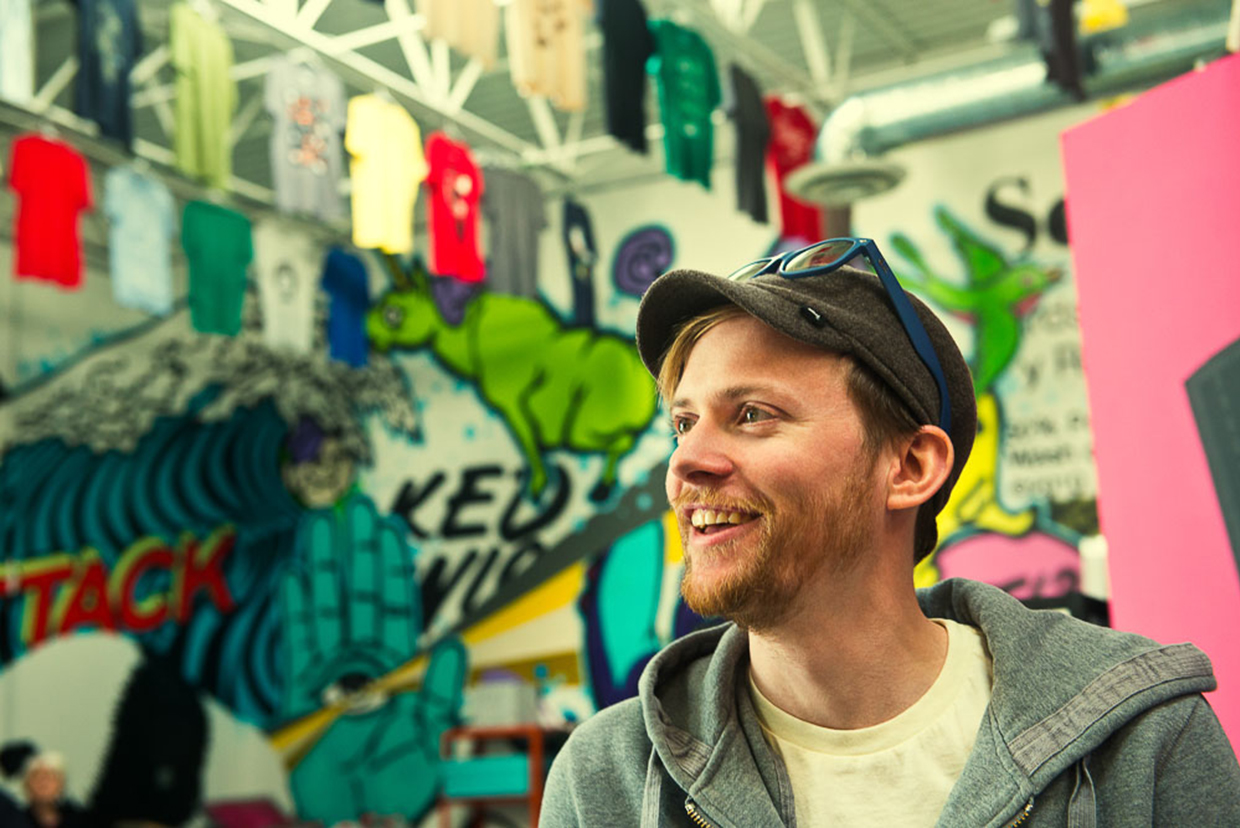
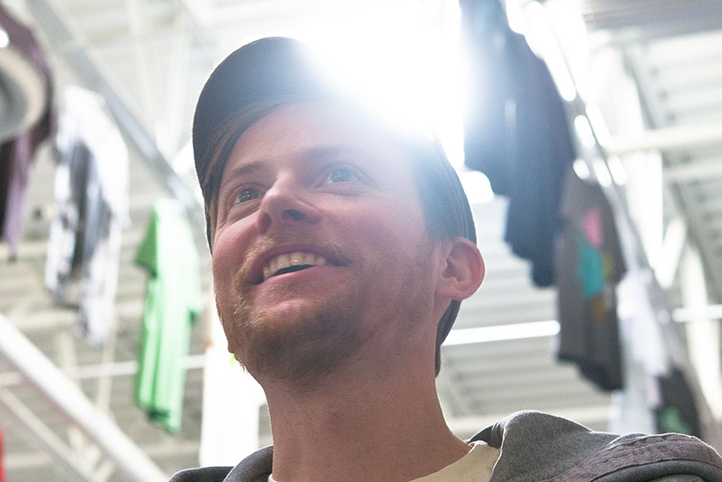
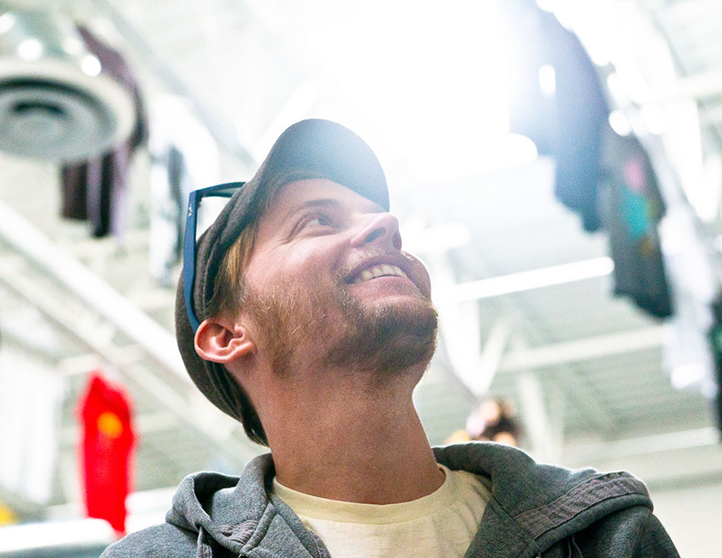
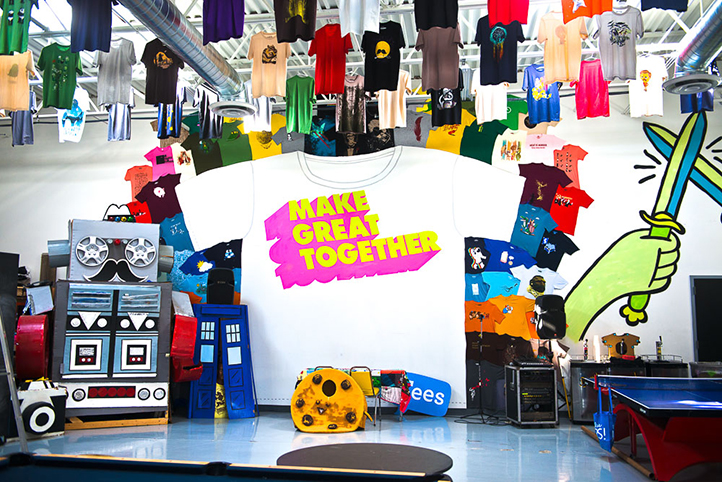
Why do you think Threadless has continued to gain momentum over the years instead of fizzling out as so many startups do?
Back then we really thought of ourselves as a tech company and we thought we could build this technology for other platforms. I think the thing that is the differentiator in our business is the actual community of people who are engaged with it, that’s the hardest thing for a startup to build. Anyone can build a website now but getting people to actually use it, that’s the hard part.
With over two million Twitter followers it looks like you have people’s attention.
We’ve always been super early adopters of new technology. I was actually the 1,500th user on Twitter. I mean even Instagram, we were the first brand on Instagram and we’ve got hundreds of thousands of followers on there. With Twitter we even did a deal early on with them. We ran a Twitter tease and they promoted our account for a long time so we got our following up but what’s crazy is that even though that doesn’t exist right now our follower count is still growing.
Did you ever think you’d be creating an empire?
No, I didn’t think there would be that many people in the world who wanted to have anything to do with the idea. At the time t-shirts from my point of view were basically logo shirts, you would go to the mall and buy a shirt with a corporate logo on it or maybe you go to a show and buy a band shirt. I thought, “Why would people want weird abstract art?” That hadn’t surfaced yet in T-shirts and I didn’t think there was going to be a market for it.
Of all the designs that have been printed, do you have a favorite?
We’ve probably printed close to 4,000 designs and my favorite is a really weird design. It’s this overweight woman holding her baby away because she is wearing high heels and she stepped on a pony and the pony is bleeding on the ground. The shirts I like usually don’t sell very well. [Laughs]
Who is the artist behind the Threadless logo and the graffiti art here?
The logo itself is just my handwriting that I wrote on a touchpad when I was in the passenger seat of a car while we were driving. All of this painting was done by this guy named Joe Suta who we met in 2005 and he’s been painting our offices ever since. He’s one of the most prolific graffiti artists. You see his tags up everywhere in Chicago.
Craziest shirt design you’ve seen make it to the printers?
Oh, we’ve printed some crazy stuff. I don’t even want to say! There was this guy, Anil Dash, who was a blogger that wore it in a photo on the front page of the New York Times once and they had no idea what it meant. It’s the most disgusting thing. It was a joke but I’m telling you, we’ve printed some crazy stuff!
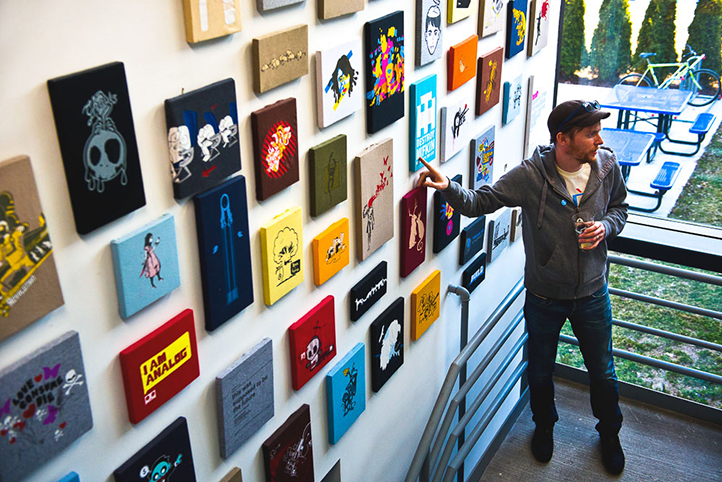
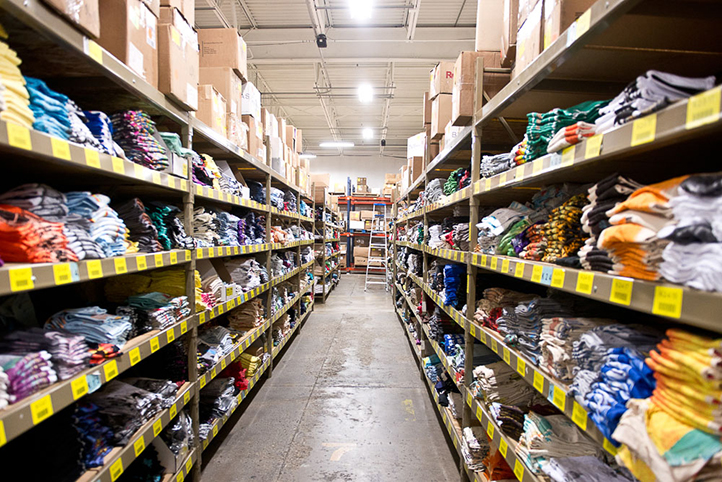
Threadspotting showcases celebs caught sporting Threadless gear. Who are some of your famous fans?
In “Modern Family” right now you can find Alex and Luke wearing one of our shirts in almost every single episode. I think the first celebrity was Zach Braff, he was wearing them in “Scrubs” all of the time. What’s cool is those placements just happen. They ordered the shirts from us, we didn’t place that.
Your headquarters are in the West Loop. Where do you live in the city?
I’ve moved around a lot in Chicago and I still move a lot. I think it’s because of growing up and always moving all around. I moved to Colorado about four years ago and then moved back here a year and a half ago. I thought that I loved Colorado and that’s where I wanted to be but being away from Chicago made me appreciate it that much more. I actually live up in Evanston right now, right on the border of Chicago and I take the train in.
What is the process for submitting a design?
People submit designs and they get scored by anybody on the website and then we print the best ones. We get about 2,000 submissions a week. We’ve had about 400,000 designs submitted and only printed 4,000 of them so the ones that get printed are the top 1 percent. We usually print six new designs every week and pay the artist $2,000 for their design. On top of that we had been doing reprint fees of $500 but we’re switching to a royalty model where they get a percentage of every sale. We wanted people’s compensation to be aligned with how many we were printing.
Who has made the most money off of their designs?
I’m not sure exactly who it would be right now but it’s probably close to $100,000 in total.
Biggest piece of advice you have for artists trying to get printed?
I think that the number one thing when designing a shirt is the concept rather than the style. It has to be something you get right away. You have to see it for a flash and understand what it means.
What are some of the challenges that caught you off guard that came with overseeing 100+ employees?
I think the biggest challenge is keeping your confidence as you are growing and hitting hurdles because you’re not going to know everything. In my case, I went to art school and dropped out. I don’t have an MBA. I don’t have experience in managing people outside of what I built here so I think in spite of not knowing everything it’s about still having the confidence to figure it out.
Was there a specific time you had to really rely on that confidence when faced with adversity?
Thinking back, more early on there were lots of issues with accounting. Our biggest problem in 2004 and 2005 was that our business was scaling really nicely from the front-end growth perspective, people were coming to our site and buying stuff and submitting designs but then on our end of execution and fulfilling our promise of shipping those orders on time our operations weren’t that great. We went through a period where we had to really figure that out. My wife is a chemical engineer and chemical engineers are really good at scaling processes so she joined Threadless in 2004 and was there for about three years until we had our first kid. She figured it out and got it buttoned down!
Are your kids creative?
My daughter is obsessed with art and drawing and wants to be a fashion designer. I have two kids, a three-year-old and a five-year-old.
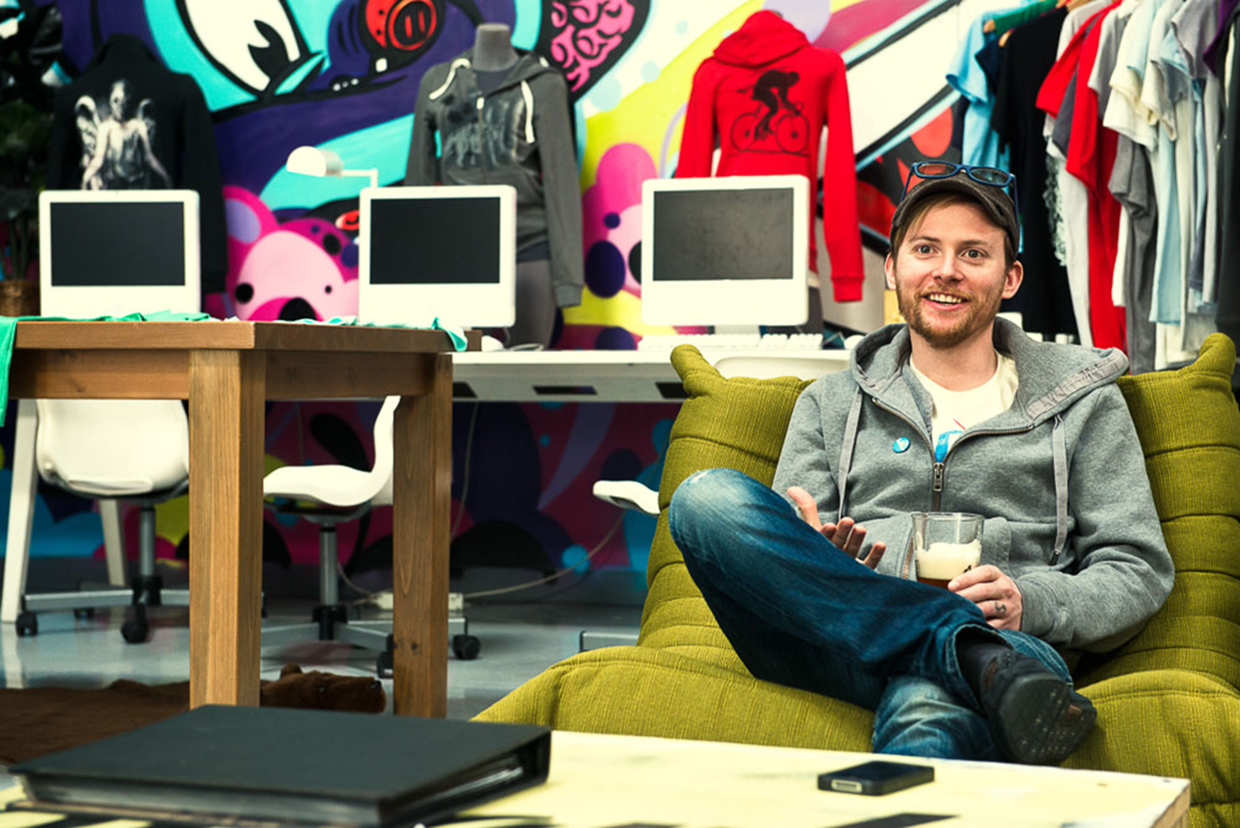
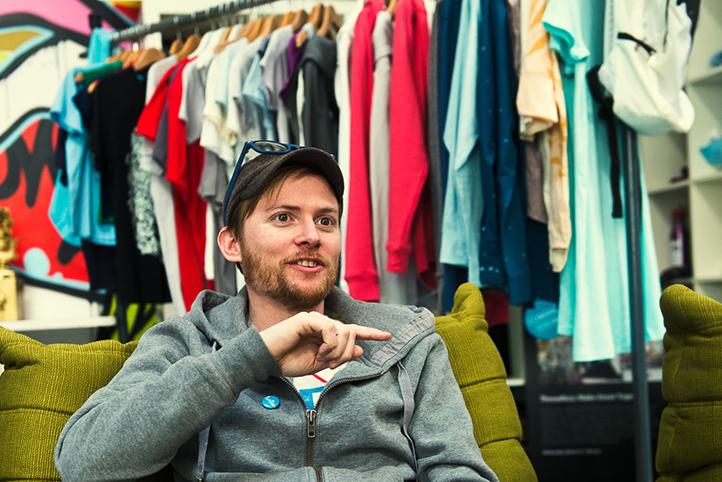
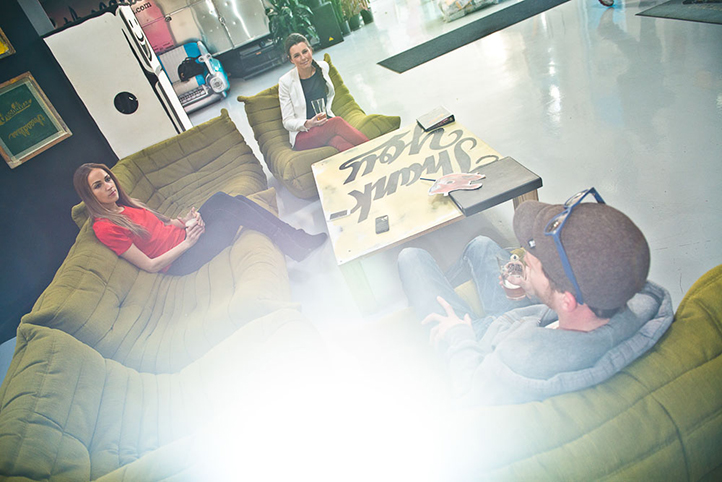
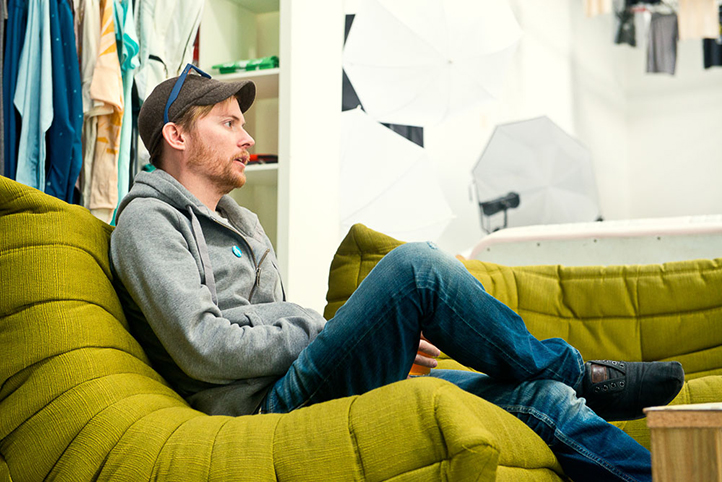
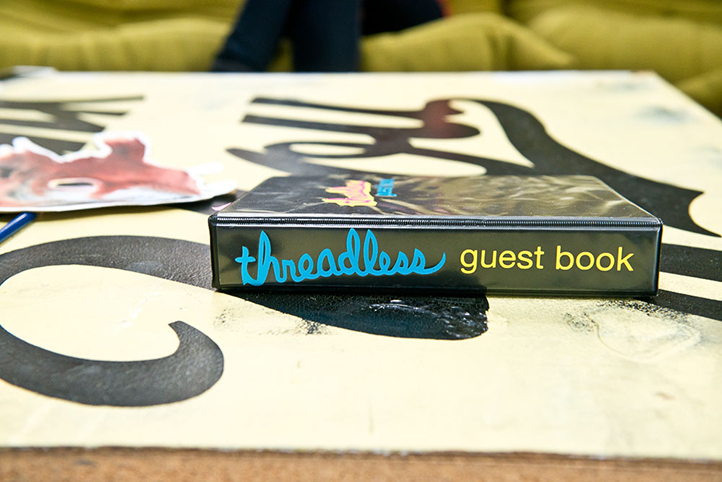
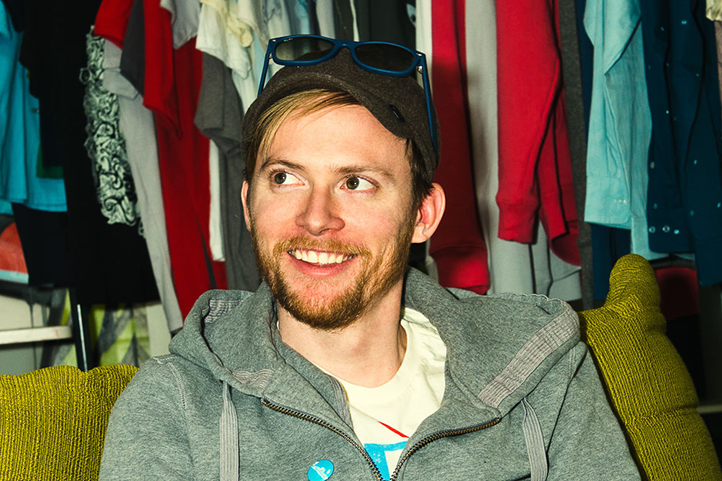
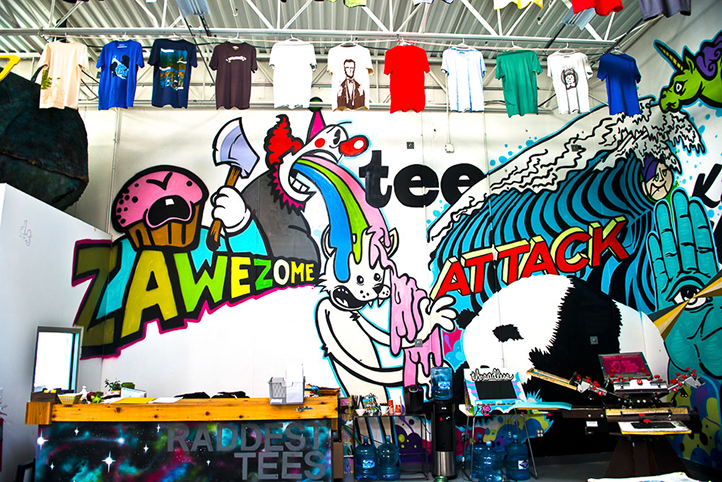
What would you say is your biggest key to success as an entrepreneur?
I think it varies from person to person but it’s important to figure out what works for you and stick with it. In my case I really like empowering the people around me. We do a lot of things here that weren’t just my decision where I said, “Go execute this.” It’s finding out what people want to be doing. I believe when someone is really excited about the work they are doing and it was partially their idea they are going to do it better and faster than they would if it was just something they were told to do. I try to look for opportunities like that wherever I can and let people have the freedom to do the things that they think are going to add value and be excited to work on.
If Threadless didn’t work out, what do you think you would be doing?
I’d probably start another platform. What I like about Threadless is the whole crowdsourcing term that came into play and I’ve thought a lot about where we fit into that. I look at what companies are doing in crowdsourcing and a lot of them are like, “We have this job that we can outsource to the crowd,” but that wasn’t why I started Threadless. Threadless was more about how there is this crowd of people that I wouldn’t even consider a crowd, it’s more like a group of friends on a forum who are doing amazing things and I saw an opportunity to create a platform to make the things they are doing bigger and to create an opportunity for them. So if Threadless didn’t work out I would look for other areas where there are groups of people doing things naturally that they would do in their lives anyways, whether a company existed or not, and figure out if there was a way I could add to them and create something bigger than the two of us would do [on our own].
When you started to see success were there any fun purchases that you splurged on?
There have been a lot of fun purchases! [Laughs] The number one purchase I made was probably two electric go-karts that go 50 miles per hour. There’s actually a hilarious video where I’m driving one in downtown Chicago through the alleys and stuff when it’s snowing out.
Is it safe to say you own enough t-shirts to last a lifetime?
Pretty much, yeah. I have two tall dressers and they’re all filled with t-shirts. Every time I bring home new shirts I take a few out and archive them in the basement. I probably have close to 2,000 shirts in my house.
If you could have a drink with anyone, who would it be?
I think it might be somebody like Ralph Steadman, the artist who did the art for Hunter S. Thompson. He’s an artist I’ve looked up to for a long time.
Did you enjoy this feature? Subscribe to our newsletter and never miss a drink, we promise we’ll never spam you!

